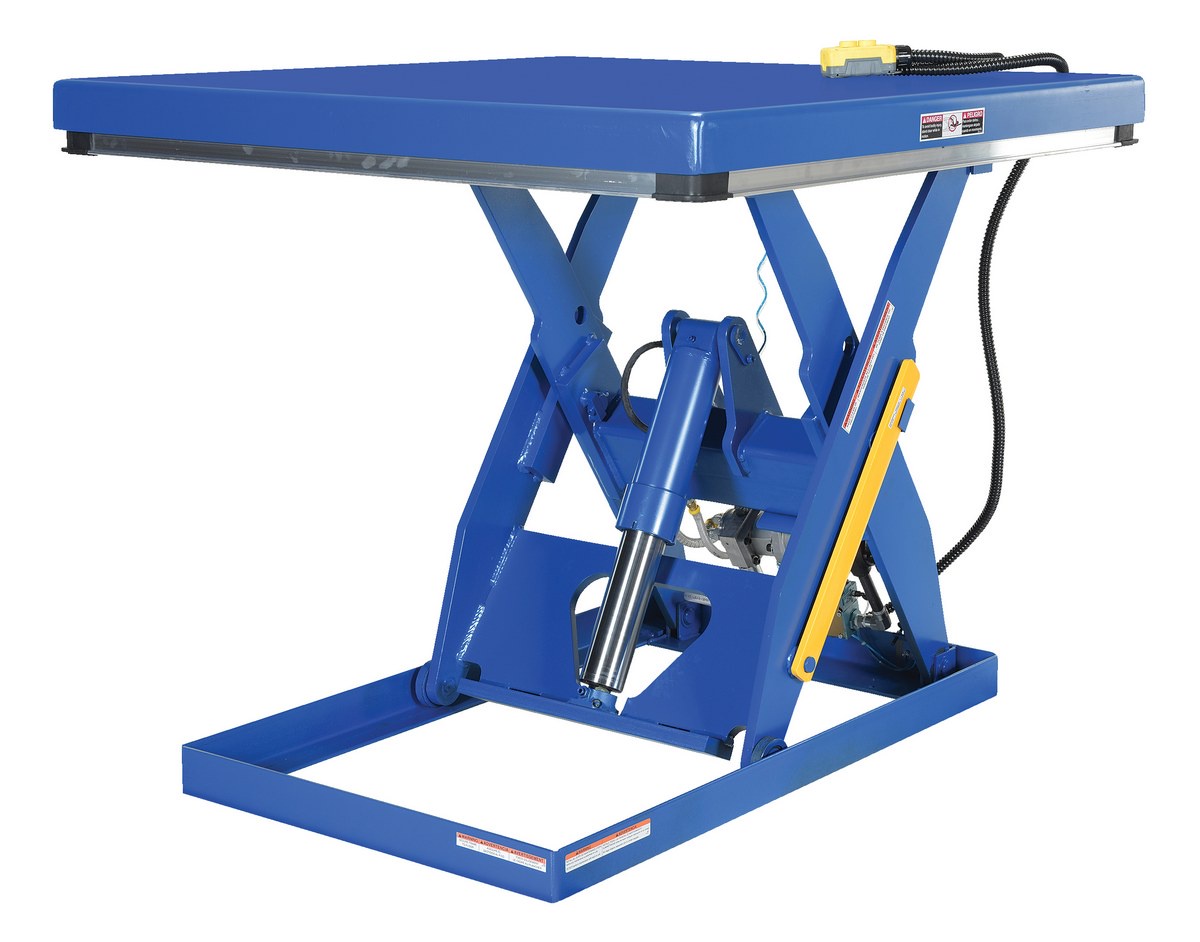Hydraulic scissor lift tables have transcended their traditional roles in warehouses and distribution centers, making a significant impact in the realm of manufacturing. These versatile lifting solutions, powered by hydraulic systems, have proven invaluable in optimizing processes, improving ergonomics, and enhancing overall efficiency on the manufacturing floor. This article explores how hydraulic scissor lift tables go beyond the warehouse, becoming essential tools in various manufacturing environments.
- Material Handling and Assembly Lines: Enhancing Workflow Efficiency
In manufacturing environments, particularly those focused on assembly and production lines, hydraulic scissor lift tables play a crucial role in material handling. These lifts are adept at elevating materials to the ideal height, facilitating seamless transitions between workstations. Workers can easily access components, reducing the need for excessive bending or reaching. This not only enhances efficiency but also contributes to a more ergonomic working environment, reducing the risk of strain and injuries.
- Machining and CNC Operations: Precision Positioning
Precision is paramount in machining and CNC operations, and hydraulic scissor lift tables offer a solution for achieving accurate positioning of workpieces. These lifts provide a stable and adjustable platform, allowing operators to position materials at the optimal height for machining processes. The precision offered by hydraulic scissor lift tables contributes to improved accuracy in cutting, milling, and other machining tasks, ultimately enhancing the quality of the manufactured components.
- Integration with Production Equipment: Seamless Machinery Interaction
Hydraulic scissor lift tables seamlessly integrate with various production equipment, enhancing the overall efficiency of manufacturing processes. Whether it's positioning materials for automated welding, aligning components for robotic assembly, or facilitating the loading and unloading of machines, these lifts contribute to the smooth interaction between human operators and production machinery. Their adaptability ensures they can be customized to suit the specific requirements of different manufacturing equipment.
- Die Handling and Stamping: Safe and Controlled Movements
In manufacturing environments that involve die handling and stamping processes, hydraulic scissor lift tables offer a safe and controlled means of elevating and positioning dies. The lifts provide a stable platform for loading and unloading dies onto stamping machines. The precise control over lift height ensures that dies can be accurately positioned, contributing to the overall efficiency and safety of the stamping process.
- Welding and Fabrication: Facilitating Complex Assemblies
Welding and fabrication processes often involve the assembly of complex structures. Hydraulic scissor lift tables aid in these operations by providing a stable and adjustable platform for workers to position materials during welding and assembly. The versatility of these lifts allows for easy adaptation to various welding and fabrication tasks, enabling workers to achieve optimal positioning for intricate assemblies.
- Maintenance and Repairs: Elevated Access for Technicians
Manufacturing equipment requires regular maintenance and occasional repairs, tasks that often involve accessing elevated components. Hydraulic scissor lift tables provide a safe and stable platform for technicians to perform maintenance tasks at different heights. Whether it's inspecting machinery, replacing components, or conducting routine maintenance, these lifts ensure that technicians have convenient and secure access to elevated areas.
- Customizable Solutions: Tailoring to Manufacturing Needs
One of the standout features of hydraulic scissor lift tables is their customization capabilities. In manufacturing environments where diverse tasks demand unique solutions, these lifts can be tailored to specific needs. Customizable features include variable lift heights, load capacities, platform sizes, and additional functionalities. This adaptability ensures that hydraulic scissor lift tables seamlessly integrate into the diverse and dynamic landscape of manufacturing operations.
- Ergonomics and Worker Safety: Prioritizing Well-being
Hydraulic scissor lift tables contribute significantly to the ergonomics and safety of manufacturing environments. By reducing the need for manual lifting, bending, and stretching, these lifts help mitigate the risk of workplace injuries and musculoskeletal strains. The adjustable height feature allows workers to customize their working conditions, creating a more comfortable and ergonomically sound workspace.
- Heavy-Duty Material Handling: Handling Varied Loads
Manufacturing often involves the handling of heavy and cumbersome materials. Hydraulic scissor lift tables are designed to handle varied loads, from heavy machinery components to large assemblies. The robust construction and high load capacities of these lifts make them indispensable in manufacturing environments where the movement of heavy materials is a routine part of daily operations.
- Efficient Workflow: Boosting Overall Productivity
In manufacturing environments, where efficiency is a key metric, the integration of hydraulic scissor lift tables contributes to streamlined workflows. By providing efficient material handling, precise positioning, and ergonomic benefits, these lifts play a pivotal role in boosting overall productivity on the manufacturing floor. Reduced downtime, improved worker efficiency, and enhanced safety collectively contribute to a more productive and competitive manufacturing environment.
In conclusion, the applications of hydraulic scissor lift tables in manufacturing environments extend far beyond conventional material handling. From enhancing precision in machining processes to facilitating complex assemblies in fabrication, these lifts have become integral tools in the modern manufacturing landscape. Their versatility, customization options, and ergonomic benefits make hydraulic scissor lift tables indispensable assets for manufacturers seeking to optimize processes, improve worker safety, and elevate overall efficiency on the production floor.


No comments yet